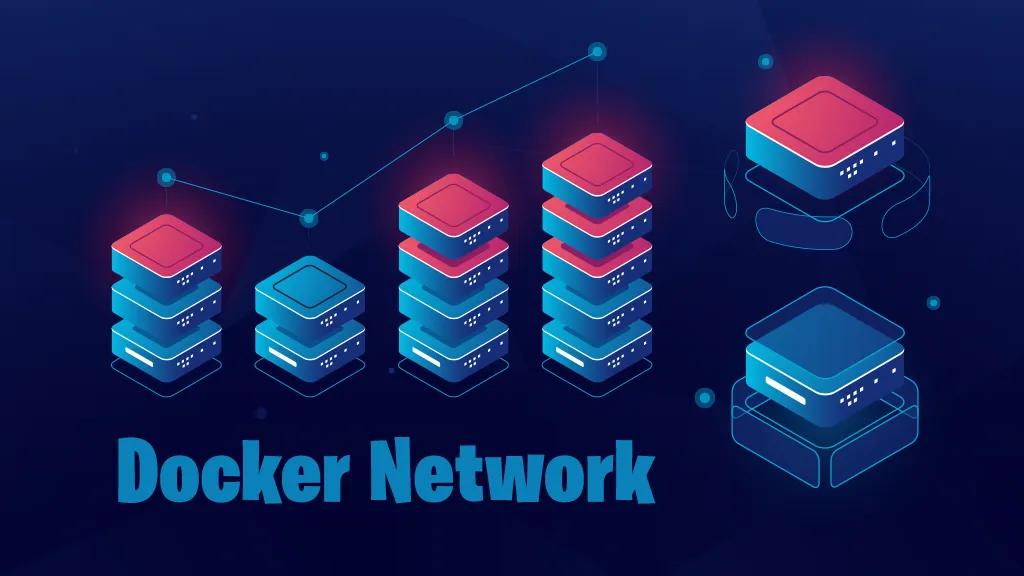7 Docker Networking Types Simplified: Build, Connect, and Scale Containers
 Chetan Mohanrao Mohod
Chetan Mohanrao Mohod
Docker networking is crucial for setting up communication between containers, allowing them to share data efficiently or stay isolated as needed. With Docker’s various networking types, we can tailor container connectivity based on application requirements, whether it’s a multi-container application, isolated testing environment, or clustered setup across hosts. Let’s dive into each type with examples to illustrate their unique benefits!
1. Bridge: The Private Chat Room
Explanation: The Bridge network is the default Docker network type. When a container is created without specifying a network, it’s assigned to a bridge network. This type allows containers on the same bridge to communicate privately, but they are isolated from external networks. Think of it as a private chat room that only includes containers connected to the same bridge.
Example: If you have two containers, one running a web server and another running a database, both can be on a bridge network to communicate securely without exposing their data to other containers.
Command to create a bridge network: docker network create my_bridge_network
Then, you can connect containers to this network:
docker run -d --name web_app --network my_bridge_network nginx
docker run -d --name database --network my_bridge_network postgres
2. Host: Boundless Connection with the Host
Explanation: The Host network removes any isolation between the Docker container and the host machine’s network. Containers on the host network share the host’s IP address, making them directly accessible on the host’s network interfaces. This is useful for applications requiring high network performance, as there’s no overhead from network translation.
Example: If you’re running a monitoring application that needs to bind directly to the host’s network interface, using the host network type can simplify configuration and reduce latency.
Command to run a container with the host network:
docker run -d --network host nginx
3. Overlay: Multi-Host Virtual City
Explanation: Overlay networks enable containers on different hosts to communicate as if they were on the same network. This type is essential for scaling applications across multiple Docker hosts and is commonly used in Docker Swarm or Kubernetes setups. Overlay networks create a “virtual city” where containers on different machines can easily communicate, making it ideal for clustered or microservices applications.
Example: If you’re deploying a web app and a database across multiple hosts, overlay networks let these services communicate, regardless of where they’re located physically.
Command to create an overlay network (requires Docker Swarm mode):
docker network create -d overlay my_overlay_network
4. None: The Silent, Off-Grid Mode
Explanation: The None network type provides complete isolation, giving the container no access to external or internal networks. This type is used when you want a container to be off-grid, unable to communicate with anything else. It’s ideal for testing or when you need a secure, standalone environment.
Example: For security testing, where you want to run a containerized application without exposing it to any network, the None network type ensures the container operates in complete isolation.
Command to run a container with the None network:
docker run -d --network none busybox
5. Macvlan: Unique IDs for Containers
Explanation: Macvlan networks give each container its own MAC address, making it appear as a unique device on the network. This is useful when applications need to appear as separate physical devices. Unlike bridge or host networks, containers on Macvlan networks can interact with other devices on the local network as if they were standalone devices.
Example: For an IoT application where each device needs a unique MAC address to register on a network, Macvlan lets each container behave as if it’s a distinct device.
Command to create a Macvlan network:
docker network create -d macvlan --subnet=192.168.1.0/24 --gateway=192.168.1.1 -o parent=eth0 my_macvlan_network
Then, you can connect containers to this network:
docker run -d --network my_macvlan_network nginx
6. IPvlan: Precision IP Control
Explanation: IPvlan is similar to Macvlan but offers more precise control over IP address management. This type allows Docker containers to share IP space with the physical network without assigning each container a unique MAC address. IPvlan is useful when you need direct control over IPs for routing purposes.
Example: If you have strict IP management requirements for an enterprise network, IPvlan
Subscribe to my newsletter
Read articles from Chetan Mohanrao Mohod directly inside your inbox. Subscribe to the newsletter, and don't miss out.
Written by

Chetan Mohanrao Mohod
Chetan Mohanrao Mohod
DevOps Engineer focused on automating workflows, optimizing infrastructure, and building scalable efficient solutions.